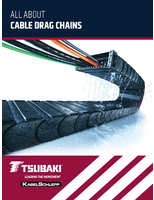Standards help robots perform dangerous construction tasks.

Press Release Summary:

Using technology that was developed with help of standards, robots designed by Robotics and Mechanisms Laboratory to do hazardous construction work won prize at 2008 International Capstone Design Fair. Two robots use electric motors, while third uses compressed air muscle. IEC 60335-2-100 standard was utilized for safe use and development of electric motors, while ISO 2398:2006 was used to specify requirements for textile-reinforced rubber hose for compressed air.
Original Press Release:
Component Standards Help Robots to Perform Dangerous Construction Tasks
Robots designed to do hazardous construction work won a prize at the 2008 International Capstone Design Fair. The robots, which can be utilized to prevent construction workers from performing tasks that put them in danger, use technology that was developed with the help of standards.
Three different kinds of robots were designed by the Robotics and Mechanisms Laboratory (RoMeLa) of the College of Engineering at Virginia Tech to climb poles, allowing them to take the place of construction workers for dangerous duties such as inspecting high-rises or underwater bridge piers. They can easily climb scaffolding and buildings by wrapping around a poll or beam, and then rolling upward with an oscillating joint motion. Built-in sensors and cameras allow the robots to inspect structures and perform other tasks.
Two of the robots designed by RoMeLa use electric motors, while the third uses a compressed air muscle. Both technologies have been developed and advanced with the help of standards. Electric motors such as the one used by the RoMeLa team are commonly used in household appliances like vacuums, garden tools, and electric drills. Standards have guided the safe use and development of these motors, such as IEC 60335-2-100 Ed. 1.0 en:2002, Household and similar electrical appliances - Safety - Part 2-100: Particular requirements for hand-held mains-operated garden blowers, vacuums and blower vacuums.
IEC 60335-2-100 was developed by Technical Committee (TC) 61, Safety of household and similar electrical appliances. Secretariat duties for TC 61 are performed by Underwriters Laboratories (UL), an ANSI member and audited designator. UL also serves as the U.S. National Committee (USNC)-approved U.S. Technical Advisory Group (TAG) Administrator to TC 61, carrying U.S. positions forward to the committee.
Another international standard has contributed to the development of the compressed air muscle found in one of the robots. ISO 2398:2006, Rubber hoses, textile-reinforced, for compressed air, specifies the requirements for three types, three classes, and two categories of textile-reinforced rubber hose for compressed air. The hoses described in this standard are similar to the lightweight and efficient tubing found in the robot's compressed air muscle, which allows it to scale poles.
ISO 2398:2006 was developed by the International Organization for Standardization (ISO) TC 45, Rubber and rubber products, Subcommittee 1, Hoses. The ANSI-accredited U.S. TAG Administrator to TC 45 is ASTM International, an ANSI member and audited designator.




